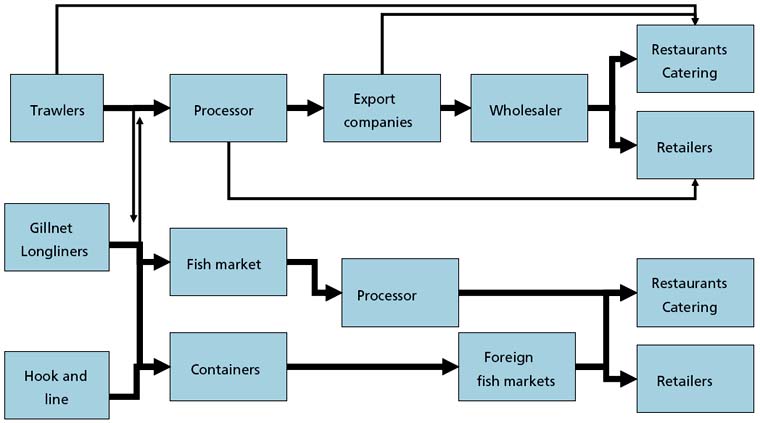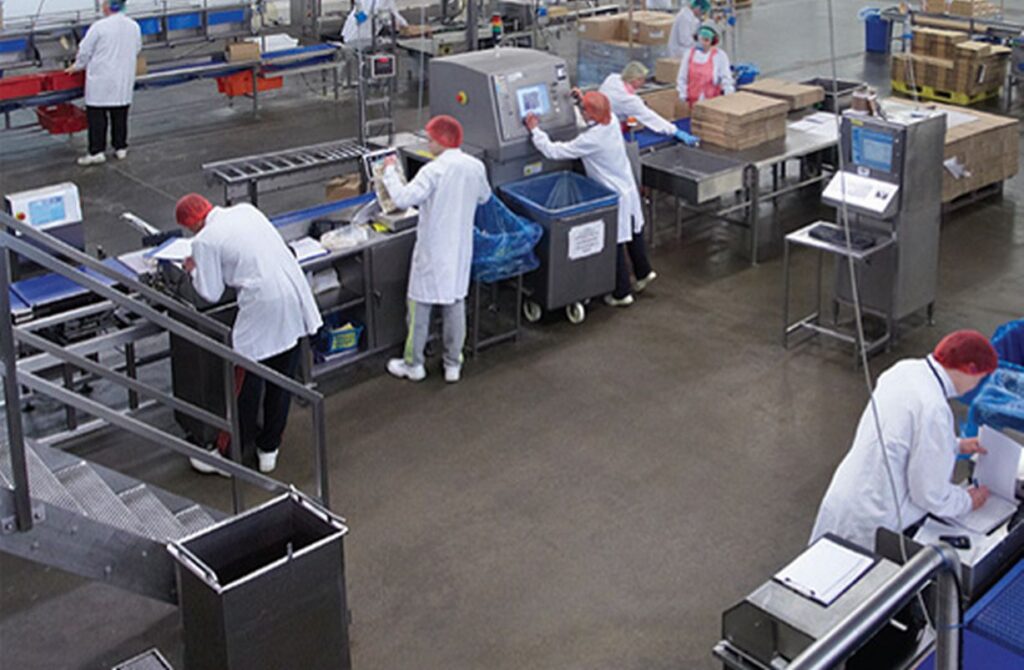Fish processing business involves the transformation of raw fish into a range of value-added products that are ready for consumption or further processing. This can include cleaning, gutting, filleting, freezing, smoking, canning, and packaging fish.
Fish processing businesses can operate at various levels of the supply chain, from small-scale operations that process fish for local markets to large-scale factories that supply processed fish products to international markets. The products that are produced can include fresh or frozen fillets, fish cakes, fish sausages, fish sticks, canned fish, fish jerky, fish meal, and fish oil.

The fish processing business is an important part of Tanzania seafood industry, and it provides an essential source of food and employment in many regions around the country. However, it can also be a challenging business to operate, as it is a perishable product that requires good storage designs & proper marketing strategies on one hand and it requires following strict food safety regulations on the other.
I. Introduction
Brief overview of the fishery sector in Tanzania
The fishery sector is an important sector of the Tanzanian economy, with significant potential for growth and development. Tanzania is blessed with an abundance of fish resources from its vast freshwater lakes, the Indian Ocean, rivers, dams, etc.
Table 1: Distribution of water resources and estimated fisheries potential
Fishery Products Supply Chain in Tanzania
The fish supply chain involves a series of interconnected activities that bring fish from the ocean or freshwater sources to the end consumer. The different stages of the supply chain can include:
- Fishing: Fish are caught using various methods such as nets, traps, and hooks.
- Harvesting: Once caught, the fish are then sorted and prepared for transportation to processing facilities.
- Processing: At the processing facility, the fish are cleaned, gutted, filleted, and prepared for consumption or further processing.
- Distribution: Processed fish products are then transported to wholesalers, retailers, and other end-users.
- Retail: Finally, the fish products are sold to consumers through various channels such as grocery stores, fish markets, and restaurants.
Throughout the supply chain, various intermediaries such as brokers, transporters, and storage facilities play important roles in ensuring the safe and efficient handling of the fish products. Additionally, there are various regulatory bodies that oversee different aspects of the fish supply chain to ensure food safety and environmental sustainability.

Importance of fish processing to the Tanzanian economy
Fish processing plays a critical role in the Tanzanian economy, providing employment opportunities, income, and foreign exchange earnings. According to the Tanzania Fisheries Research Institute (TAFIRI), the fish sector contributes to about 1.8% of Tanzania’s Gross Domestic Product (GDP) and approximately 4.5 million people depends on the sector to earn their living. The sector also contributes significantly to the country’s food security, providing a source of protein and essential nutrients to millions of Tanzanians.
Fish Production and Consumption in Tanzania
The chart and table below show a comparison of production and imports on one hand and consumption exports on the other. Note that since stock movements (opening stock and closing stock) on the first day of 2016 and last day of 2020 are not shown, the two sides seem to be out of balance balance.
Table 2: The trend of fish consumption in Tanzania (2016- 2020)
| wdt_ID | Year | Population (Mil) | Imports (Tons) | Production (Tons) | Aqua production (Tons) | Export (Tons) | Aqua Exports (Tons) | Consumption (Tons) | Per Capita (Kg) |
|---|---|---|---|---|---|---|---|---|---|
| 9 | 2016 | 44.93 | 13,917.66 | 362,594.89 | 5,677.36 | 39,691.46 | 140.36 | 342,358.09 | 7.60 |
| 10 | 2017 | 48.68 | 22,961.67 | 362,645.30 | 11,000.00 | 36,063.23 | 200.89 | 385,240.55 | 7.91 |
| 11 | 2018 | 48.68 | 22,752.38 | 387,543.00 | 16,288.00 | 44,939.79 | 244.00 | 370,209.30 | 7.84 |
| 12 | 2019 | 55.89 | 5.98 | 470,309.23 | 18,081.60 | 45,775.15 | 336.40 | 442,285.26 | 7.91 |
| 13 | 2020 | 57.64 | 5.33 | 473,592.24 | 17,254.60 | 40,477.97 | 29.11 | 473,568.99 | 8.22 |
Purpose of the article
This article aims to provide insights into the fish processing business in Tanzania, with a focus on the regulatory environment, registering a fish processing business, the best locations to locate a fish processing factory, the potential domestic and export markets, how to export fish products from Tanzania, availability of skilled labor, availability of domestic finance from banks, and immigration laws for foreign investors. The article is intended to serve as a guide for prospective fish processing investors, highlighting the opportunities, challenges, and regulatory requirements of starting and running a fish processing business in Tanzania.
II. Fish Processing Regulatory Environment
Overview of regulatory bodies and their functions
Regulations on fish processing in Tanzania
Compliance requirements for fish processing businesses
Importance of adhering to regulations
III. Registering a Fish Processing Business in Tanzania
Steps to register a fish processing business in Tanzania
Required documents and fees
Timelines for registration
IV. Best Locations to Locate a Fish Processing Factory
Overview of the best locations to set up a fish processing factory in Tanzania
Factors to consider when selecting a location
Availability of infrastructure

V. Potential Domestic Market
Overview of the domestic market for fish products in Tanzania
Demand for fish products
Pricing and marketing strategies
VI. Potential Export Market
Overview of the export market for fish products in Tanzania
Popular export destinations
Export regulations and compliance requirements
VII. Exporting Fish Products from Tanzania
Steps to export fish products from Tanzania
Export documentation and fees
Transportation options
VIII. Availability of Skilled Labor to Work in Fish Factory
Overview of the availability of skilled labor in Tanzania
Training and capacity building opportunities
Strategies to attract and retain skilled labor
IX. Availability of Domestic Finance from Banks
Overview of the financing options available to fish processing businesses in Tanzania
Requirements and eligibility criteria
Interest rates and repayment terms
X. Immigration Laws for Foreign Investors
Overview of the immigration laws for foreign investors in Tanzania
Visa requirements
Work permits and residency permits
XI. Conclusion
Summary of the key points covered in the article
Future prospects for the fish processing business in Tanzania
Recommendations for prospective fish processing investors.
 Kessy Juma is the founder of Miamia Trading Company (miamiatz). He is a Techpreneur with roots in accountancy. He believes that any business is good as long it caters the right market using the right strategy. |






